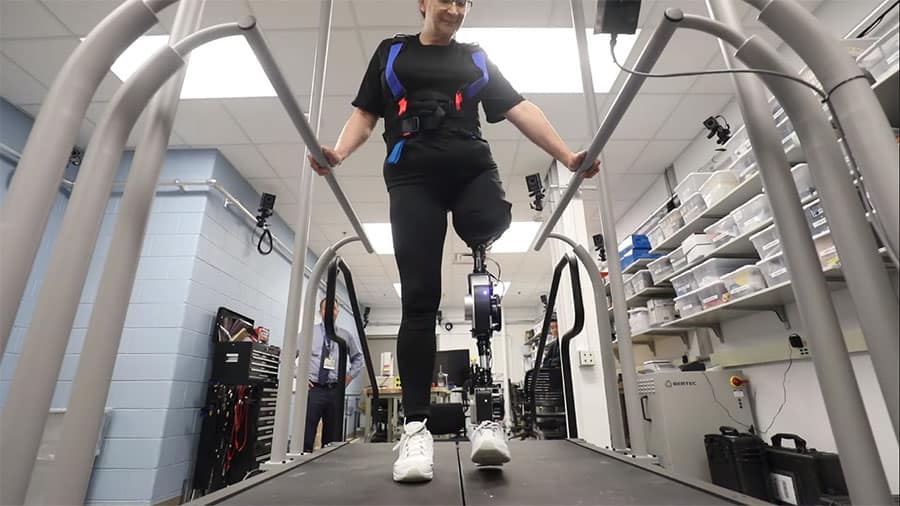Video: Uni and assistive tech firm partner to bring open-source prosthetic leg to research labs

An open-source, artificially intelligent prosthetic leg designed by researchers at the University of Michigan in the US will be brought to researchers by assistive technology company Humotech.
The design, plans to build the prosthetic leg, and code to run it are all freely available to prosthetic researchers. It means researchers do not need to build a robotic prosthesis from scratch.
The goal of the collaboration is to speed the development of control software for robotic prosthetic legs, which have the potential to provide the power and natural gait of a human leg to prosthetic users. Additionally, the project intends to break down barriers to robotic prosthetic leg research, offer a unified platform to fragmented research efforts, and enable labs to conduct high-impact research.
Elliott Rouse, an assistant professor of mechanical engineering and core faculty at the University of Michigan’s Robotics Institute, said: “We developed the open-source leg to foster the study of control strategies for robotic prostheses—one of the most prominent barriers hindering their public impact.
“The open-source leg is now being used by over 10 other research groups to develop control strategies on a common platform, but we noticed some research groups would rather not build it themselves. To maximise the benefit to the public, a product-like solution was needed.”
Humotech develops tools for the advancement of wearable robotic control systems and other wearable devices.
For labs that need an off-the-shelf robotic prosthesis for research and development, Humotech will now provide a low-cost assembled version of the open-source leg, including warranty service and technical support.
Josh Caputo, President and CEO of Humotech, explained: “We see many benefits to standardising the hardware and software used by the research community. The fully contained and powerful open-source leg is a natural expansion of what we can do to support our mission to transform the way the world develops wearable robotics.
“By offering a preassembled version with professional support, we hope to improve access to this platform for studying the control of robotic prosthetic legs. We’re extremely excited to partner with the University of Michigan on this strategic initiative and together help accelerate research and innovation in the field.”
Using its own research community, Humotech will further build and support a development community around the open-source leg and seek to incorporate the leg into Humotech’s Caplex platform. Caplex is a hardware and software testbed that enables researchers to emulate the mechanics of wearable machines, including prostheses and exoskeletons.
In collaboration, Elliott’s lab and Humotech will also iterate on new versions of the open-source leg to meet the needs of prosthetic wearers and researchers.
Find out more about the open-source prosthetic leg in the video below:
For researchers looking to build the leg on their own, the prosthetic’s parts list, assembly instructions and programming are freely available online.
“This collaboration furthers the mission of our open-source leg project,” Elliott concluded. “The translation of an open-source research prototype to a commercial product is rare for our field, but our partnership can continue to lower the barrier to research, speed technical advances, and in the end, positively impact lives.”

